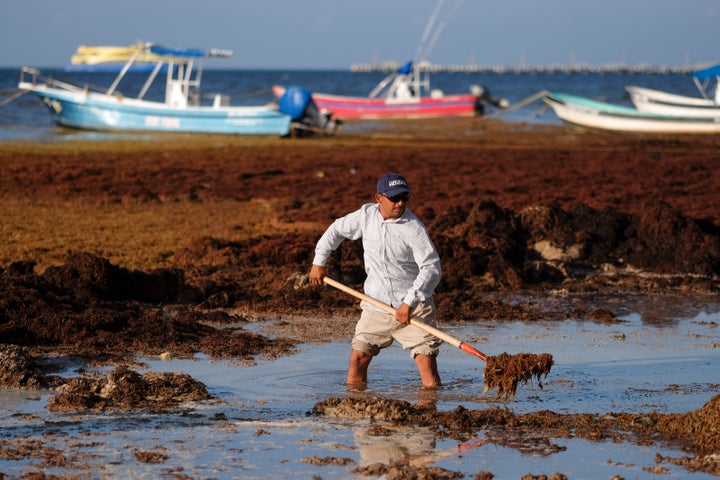A giant blob of brown seaweed may soon settle along swaths of beaches in Florida and across the Gulf of Mexico, scientists warn, fouling popular tourist destinations for months.
The seaweed — a type of leafy, floating algae called sargassum — usually spends most of the year bobbing in a 5,000-mile-wide mass across the Atlantic Ocean. The sargassum is generally beneficial while out at sea, providing food and breeding grounds for a variety of species, including fish, sea turtles and marine birds.
The true peril of sargassum comes when it washes ashore. The seaweed begins to rot after a few days on land, releasing hydrogen sulfide gas that smells like rotten eggs and leaving behind brown sludge that can foul beaches for weeks. Hydrogen sulfide can threaten human health, and the sheer amount of seaweed can be too much for local crews to deal with.
Parts of the Yucatán Peninsula in Mexico were shrouded in an estimated 200 tons of sargassum earlier in March, prompting warnings of “excessive” levels of seaweed near the popular Playa del Carmen. Officials warned some beaches were at risk of 3 feet of seaweed accumulation in a week, with no signs of the sargassum diminishing as summer approaches.

Media in Key West also reported far earlier than normal sargassum deluges last week.
Past blooms have prompted a state of emergency in the Virgin Islands and fouled islands across the Caribbean, and they’re only getting bigger every year.
Scientists first noted the supercharged seaweed rafts in 2011. Some researchers hypothesize they may be getting bigger as runoff from fertilizer and agricultural waste flows into the ocean in greater amounts.
“These blooms are getting bigger and bigger, and this year looks like it’s going to be the biggest year yet on record,” Brian Lapointe, a research professor at Florida Atlantic University, told The New York Times. “This is quite early to see this much, this soon.”
Large stretches of sargassum are currently floating in the northern Caribbean and near the east of Mexico’s Yucatán Peninsula.
The University of South Florida, which monitors the annual seaweed bloom, is predicting 2023 will be a “major” sargassum year, upending tourists’ plans and threatening coastal ecosystems.
Scientists said they expect the sargassum scourge to become the new normal.

